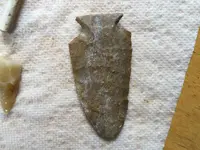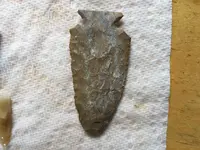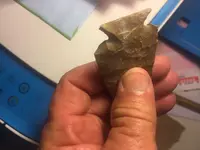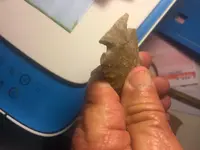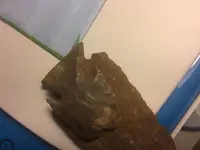FWIW
the most important diagnostic feature of a base fractured by removal of two flakes inward across the base
From both corner edges after preliminary corner removals plus center notching. However, when the first removal runs completely across the edge of the base to the other corner, as sometimes happened, the result is one continuous tranchet flake surface, as willjo's example seems to show.
Add to this that in willjo's example, both notches appear to have been created (finished) by similar tranchet flake procedure (twice on one side, once on the other).
Both of these are Decatur procedures, distinguishing their work from that of other contemporary and later corner notches at a glance. Deliberate tranchet flaking is not their
most important diagnostic feature -- it is their
only diagnostic feature. Otherwise Decatur points show the same variation in notch angles, notching depth and blade shape (100% a matter of beginning width available and degree of resharpening) as other, contemporary points show over time and space.
The Early Archaic people got around to an extent that seems to surpass even Paleo people. E.g., Gary Fogelman finding a trade black of red & cream Paoli chert from Kentucky at the Warrior Springs site in Northumberland Co., Pennsylvania. Dick Savage (this is merely stuff found by people I know or knew, and saw personally) finding a large, ace-of-spades Decatur of bullseye hornstone (Dongala ?) in Union Co. Pa. and a friend of his finding a type 3 Hardaway of silicified tuff (North Carolina) at the forks of the Susquehanna River. For that matter, Early Archaic cornernotches of Blue Coshocton (Ohio) are commonly enough found around Lancaster and Eastern Pa. that it's a familiar lithic.
The all-time distance champ I've seen was a Scottsbluff of Hixton that GF got out of a farm collection from NE Pa., years ago.
Again, FWIW. Nobody -- me included -- knows it all, or pretends to.

